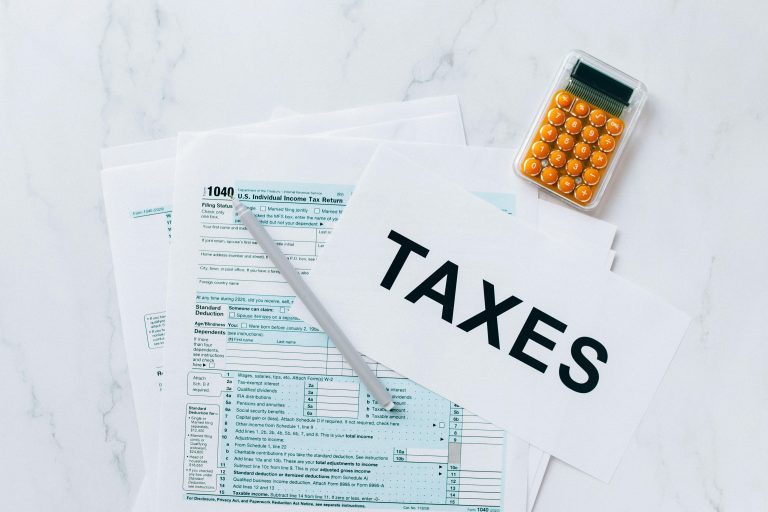Tax Season Must-Read | How to Fill Out the 1099-DA Form?
Have you heard of the 1099-DA form? Are you worried about potential tax penalties for filling it out incorrectly? Don’t worry—this article will demystify the 1099-DA form and help you navigate tax filing with ease.
1. What Is the 1099-DA Form?
The 1099-DA form is a tax reporting tool used by brokers to report transaction proceeds, cost basis, and other relevant information to the Internal Revenue Service (IRS) and taxpayers. On April 19, 2024, the IRS introduced a draft version of the 1099-DA form. Its primary purpose is to collect detailed transaction data from crypto asset brokers (including centralized exchanges, some decentralized exchanges, and wallet service providers—roles similar to stockbrokers in traditional finance).
As an innovation in tax reporting, the 1099-DA form is the first designed specifically for crypto asset traders. It collects extensive identity and transaction details from brokers on a large scale. This serves two main purposes: enhancing the IRS’s tax oversight and raising compliance requirements for crypto asset brokers and investors.
2. Who Are Crypto Asset Brokers?
The IRS’s Gross Proceeds Reporting by Brokers that Regularly Provide Services Effectuating Digital Asset Sales clearly defines which entities qualify as “brokers.” In the crypto trading space, the following entities are considered brokers:
● Centralized exchanges: Platforms like Coinbase that facilitate buying, selling, and trading of crypto assets.
● Decentralized exchanges: Platforms like Uniswap, which, despite their decentralized nature, are considered brokers for facilitating crypto transactions.
● Wallets with trading functionality: Wallets like Metamask that allow users to buy, sell, and trade crypto assets directly on their platform.
● Crypto asset ATMs and kiosks: Bitcoin ATMs and other forms of crypto transaction terminals.
Entities Not Considered Brokers:
● Blockchain maintainers: Miners, node operators, and others involved in blockchain maintenance but not direct transactions.
● Non-transactional hardware wallets: Wallet providers whose devices require connection to external exchanges for transactions.
● Developers facilitating transactions indirectly: Developers who create software for exchanges but do not engage in transactions themselves.
● Inactive smart contract developers: Developers earning income from smart contracts but not responsible for ongoing maintenance or updates.
Brokers must detail transaction proceeds (or losses) and cost basis in the form and provide this information promptly to both users and the IRS. The 1099-DA form also requires brokers to identify their type, such as:
● Self-service terminal operators
● Crypto payment processors
● Custodial/non-custodial wallet providers
● Other crypto asset tax reporters
Click here now! Manage your assets and file your taxes for free with FinTax!

3. When Will the 1099-DA Form Take Effect?
Although the 1099-DA form might seem daunting, crypto asset investors in the U.S. will not receive this form immediately. According to the regulations, brokers are required to report the proceeds from any transactions conducted on or after January 1, 2025. Investors can expect to receive the 1099-DA tax forms for their 2025 transactions starting in January 2026.
Additionally, real estate brokers must report the fair market value of digital assets paid by buyers and received by sellers for transactions that close on or after January 1, 2026.
4. What Should Individual Investors Do Upon Receiving a 1099-DA Form?
The 1099-DA form is specifically designed to report information related to the sale or disposition of crypto assets. It includes narrow definitions of crypto assets such as cryptocurrencies (e.g., Bitcoin, Ethereum), NFTs (non-fungible tokens), and stablecoins. The form details key information, including:
● Acquisition Date: When the crypto asset was obtained.
● Cost Basis: The expenses incurred to acquire the asset.
● Disposition Date: When the asset was sold or exchanged.
● Disposition Proceeds: The amount received from the sale or exchange.
● Total Gains or Losses: Calculated by subtracting the cost basis from the disposition proceeds.
Steps to Handle a 1099-DA Form:
● Verify the Information: Carefully review the 1099-DA form to ensure all details—such as your Taxpayer Identification Number (TIN) and total payments—are accurate.
● Match with Transaction Records: Compare your personal transaction records with the information on the 1099-DA form to confirm consistency. Address any discrepancies promptly.
● Report Taxable Income: Use the information from the 1099-DA form to accurately report your income on your tax return. Reflect gains or losses appropriately based on the type of transaction (e.g., buying, selling, or exchanging).
● Keep Records: Retain all transaction records and receipts. These documents serve as evidence for the income and deductible expenses reported on your tax return and can be crucial in case of an IRS audit.
● Seek Professional Advice: If you encounter any difficulties while handling the 1099-DA form, consult a tax expert or accountant to ensure accurate tax filing.
Here, we sincerely recommend that you use FinTax, a professional crypto asset management and tax filing software.
● One-Click Data Import: No matter how complex your crypto transactions are, simply enter your address to link your crypto wallets and exchanges to FinTax—no complicated steps required!
● Accurate Tax Calculations: Backed by FinTax’s expert tax team, the platform ensures results fully compliant with official tax regulations, ready for direct filing!
● Tax Reports in 10 Minutes: With FinTax’s advanced algorithms, you can generate tax reports in just 10 minutes, ready for immediate use!
Click here now! Manage your assets and file your taxes for free with FinTax!

